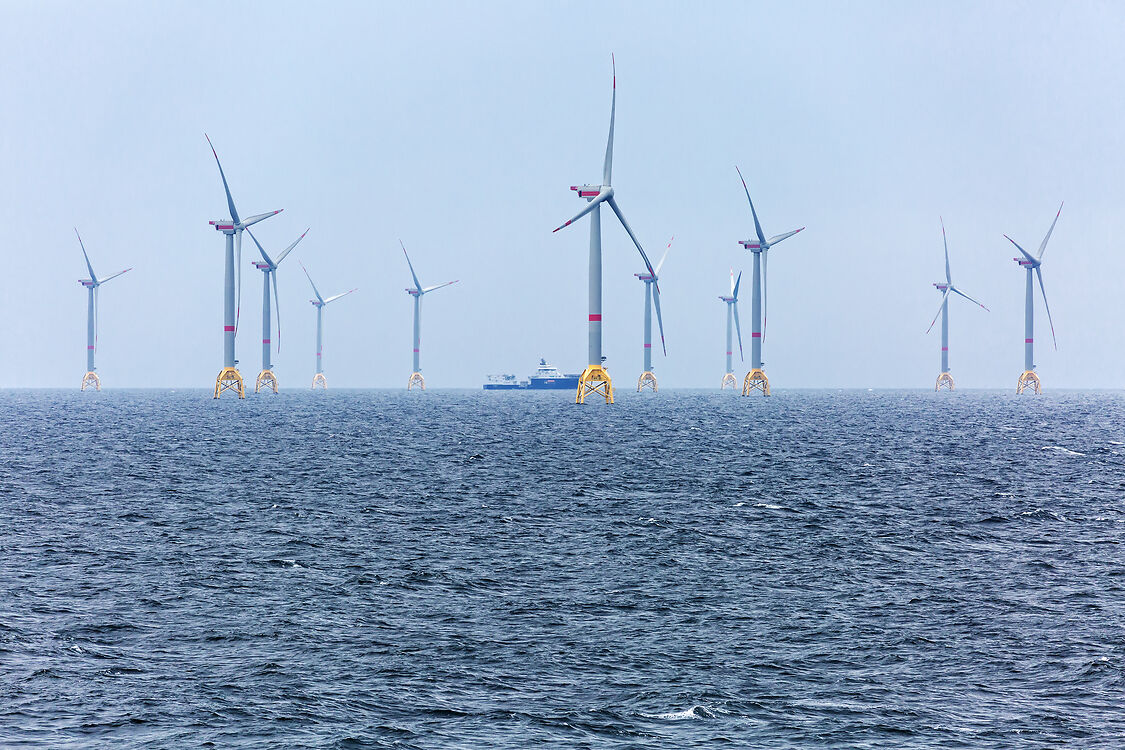Swiss venture Akselos has developed the world’s fastest and most advanced engineering simulation technology to provide real-time predictive digital twins for large asset integrity management. Their technology is particularly key in the offshore wind sector. Here, Thach Luu, APAC Channel Sales Manager, explains how Akselos can help tackle existing issues within the energy industry through technology.

Can you tell us a bit about the company and its founders?
Akselos’ technology developed at MIT through cumulative research of 150+ years, now patented and commercialised into Akselos software. Our predictive digital twin technology is based on RB-FEA (Reduced Basis Finite Element Analysis – patent US9213788B2). The technology is validated by major players such as Shell, ABS, Worley, and Lamprell as a true game-changer. Our CEO, Thomas Leurent, has 20+ years at the intersection of energy, risk management and innovation, while our co-founders, Dr Phuong Huynh (VP of Engineering / Head of Operations & Research) and Dr David Knezevic (DTO) have extensive experience in digital twins technology.
How does your solution contribute to the Digitalisation and Decarbonisation of the energy sector?
Akselos was born in response to two societal challenges: the climate change-driven transition to a low carbon economy, and the multi-trillion-dollar infrastructure investment shortfall hampering economic growth and putting societies at extreme risk. We’re working towards speeding up the megascale deployment of offshore wind by lowering the cost of energy, and making infrastructure more resilient, with condition-based monitoring and predictive maintenance at the centre of our efforts.
We believe that existing critical infrastructure can be designed and optimised to increase the performance, safety and reliability of large assets. Our predictive digital twin technology will integrate with industry workflows and will enable a step-change in predictive power at the design stage, which is then carried forward into the operations phase through design optimisation, system integration, condition-based monitoring and cloud-based applications.
The combination of these features will make the development and deployment process much more agile, accurate and scalable, and enable key stakeholders to make decisions to serve the common goals of the ecosystem, such as optimising asset performance and minimising emissions.
What is your company’s proudest achievement to date?
We were named a Technology Pioneer 2020 by the World Economic Forum. Furthermore, we announced the successful deployment of a structural Digital Twin for Shell’s Bonga Main FPSO, located 120km southwest of the Niger Delta in Nigeria. The Digital Twin is a physics-based model of the asset, which represents its entire physical counterpart in absolute detail and accuracy. The model is updated with loading conditions and inspection data on a regular basis, providing the ability to carry out structural assessments based on the ‘as is’ condition, from anywhere and at any time.
What specifically attracts you about the prospect of expanding to the Japanese market?
Former Prime Minister Yoshihide Suga’s vow that Japan will achieve carbon neutrality by 2050, backed up by specific goals for the amount of energy to be generated by offshore wind. In other words, Japan is looking to rapidly scale up its offshore wind industry from almost nothing today (0.06 GW) to 10 gigawatts by 2030 and 45 gigawatts in 2040. A gigawatt is roughly equivalent to the power produced by one nuclear reactor.
We are at the growth stage in Japan, after joining this active market in 2016. Together with our local partner, TechnoStar, we already finished several projects with large Japanese companies, such as Denso and Mitsui. Our global partner, Principle Power (based in California, US), has a US $22 million investment from Tokyo Gas. Together with them, Akselos is expected to make a solid contribution to the development of wind energy in Japan.
For the coming year, we want to expand our cooperation with local companies to contribute to the innovation and creativity of the country, as well as ensure the safety and sustainability of the critical assets.
How will your solution/product help advance the Japanese energy sector?
Akselos wants to lock in its position as a major player in the country, especially in offshore wind. We bring all the value of digital transformation to our customers. It allows removing unnecessary conservatism by bringing a significantly optimised design structure. In operation, we can precisely follow how an asset is performing, connect to the sensors and understand each component’s, assets by assets, system by system level. We understand how to generate revenue, allowing significant cost reductions. Finally, our technology enables asset life extensions, 5 to 10 years extension out a 25 years design life. Currently, 60 foundation types exist in floating wind, and we need to identify the most optimal design.
Unlike statistical solutions, our technology is able to predict the future. We can simulate in new environments and new conditions where we don’t have data to rely on. We can bring the highest accuracy standards to the operations envelopes in real-time to the asset.

